Growing Anthurium Pedatum may be a wise decision because it is an easy beginner-friendly plant, and it rewards you with rich foliage and blossoms even with minimal care.
However, they can be tricky to grow indoors when your typical home environment lacks the natural tropical setting required by the plant.
Anthurium Pedatum naturally thrives in a well-draining soil mix with peat moss, bright indirect light, a relatively warm temperature between 70-90°F, and a slightly moderate humidity level between 40-65%.

It does not tolerate soggy soil, low light and humidity levels, and the wrong potting mix.
Want to know more? Read on to learn more about caring for Anthurium Pedatum if you’re going to bring one to your home.
Table of Contents Show
Overview of Anthurium Pedatum
Known initially as Anthurium Fortunatum G.S. Bunting and Potho Pedatus Kunth, it was first discovered in the tropical forests of South America.
Hence, it is considered endogenous to Columbia and Western Andes. A tropical plant requires a typical tropical setting at home to attain its natural stature.
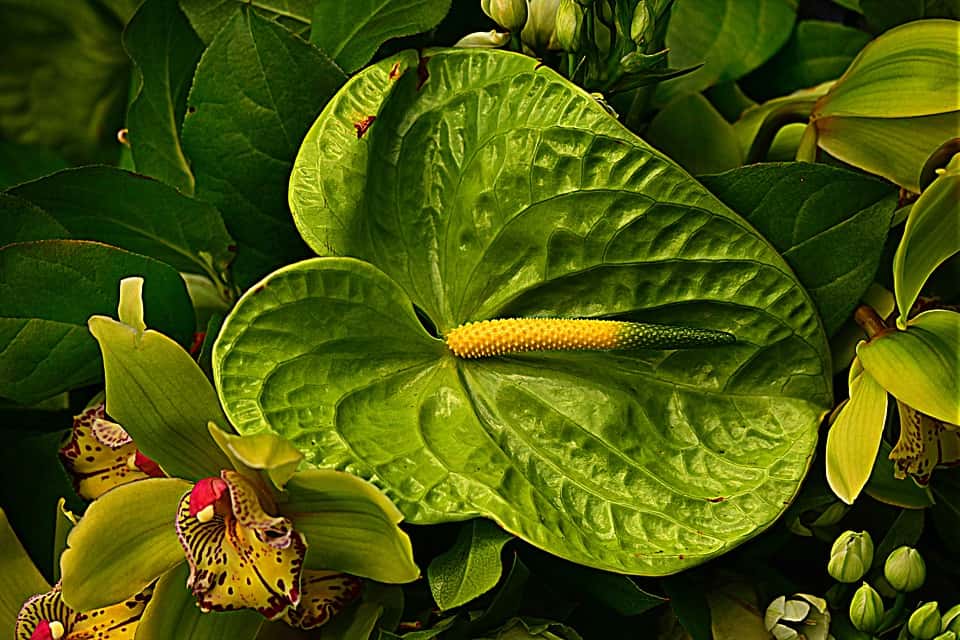
Talking about the foliage, it slightly resembles Anthurium Fingers and Brownii for its web-like foliage.
However, it does not attain tall height like other Anthurium plants.
Here is a brief guide about the Anthurium Pedatum.
| Scientific Name | Anthurium pedatum (Kunth) Schott |
| Synonym | Anthurium fortunatum |
| Native | Central America |
| Family | Araceae |
| Genus | Anthurium |
| Growth Zone | USDA Zone 10 to 11 |
| Plant Type | Tropical Perennials |
| Growth Size | 2 to 3 feet (0.6 to 0.9 meters) |
| Growth habit | Slow growth |
| Foliage | Lobe-like finger leaves |
| Drainage | Ceramic, plastic, or clay pots |
| Flowering | 3-4” long spathe yellow or green |
| Toxicity | Toxic to Humans and Pets |
| Common Pests | Mealybugs, aphids, thrips |
| Common Diseases | Bacterial blight, bacterial wilt, and Rhizoctonia root rot |
Although an indoor houseplant, you can choose to grow it in the garden. However, it will only thrive in USDA hardiness zones 11 and 13.
Like any other houseplant, it is prone to common pests and horticultural diseases like mealybugs, aphids, thrips, bacterial blight, and Rhizoctonia root rot.
Anthurium Pedatum: Ultimate Grow & Care Guide
Caring for Anthurium Pedatum is pretty simple and requires relatively less maintenance than other tropical plants.
Remember the watering schedule, potting requirement, humidity and temperature level, and fertilizing frequency to witness a healthy plant year around.
The following table describes the Anthurium Pedatum’s care and maintenance requirements.
 Bright-indirect light (7-8 hours) |  Every week in spring and summer Every 15-20 days in fall and winter |
 Well-draining, chunky soil mix that retains moisture |  Nitrogen-rich plant food once a month |
 70-90°F (21°C to 32°C) |  40-65% humidity |
 Repot only when the root ball engulfs the soil |  Propagate via offshoot (Root cuttings) |
Pedatum is comparatively a drought-tolerant Anthurium that can withstand an arid climate, but be wary about overwatering as it can invite many problems.
1. Bright Filtered Sunlight and Proper Location
Anthurium Pedatum is not bothered about receiving a lot of bright light. Ensure to provide only diffused or indirect sunlight at all times.
They naturally thrive in a moderately sunny location with indirect sunlight throughout the day.
Providing between 7-8 hours of indirect sunlight would be enough to see a healthy, even growth of Anthurium Pedatum.
However, keep them a few feet away from direct light sources such as windows, patio, and door.

You can place your indoor-grown Anthurium Pedatum at least 3-4 feet away from the south or west-facing windows.
Alternatively, you can keep them close to the north or east-facing window with ample morning sunlight.
As a rule of thumb, it requires at least 400 Foot Candle (FC) or 4300 lux light to get promising growth.
However, it does not do well in direct sunlight as excessive heat can lead to transpiration (loss of water through the leaves).
Similarly, the low light condition may severely push back the foliage growth.
| Light Saturated Plant | Light Deprived Plant |
|---|---|
| Crisp and dry foliage | Wilted stem growth and leaves |
| Browning tips with scorched leaf marks | Loss of dark green pigments |
| Discoloration and Curled leaves | Drooping foliage. Stunted or slowed growth |
Tips for Providing Appropriate Lighting
- A few hours of the early morning sun will help compensate for the lack of lighting.
- Move your plant to southwest-facing windows when you notice it is severely light deprived.
- Similarly, move it 6-feet away from the window or find a shaded location if it looks light-saturated.
- Alternatively, use LED and HID growth lights to compensate for the lack of sunlight.
A 6000K Full Spectrum white-red LED light operated for at least 12 hours will provide ample lighting and color temperature to boost foliage growth.
2. Weekly Watering
Anthurium Pedatum kept in a low to moderately bright location would not need frequent watering.
However, those kept close to windows or open areas may be slightly moist soil at all times. Therefore, consider watering them before the soil dries out completely.
Water your Anthurium Pedatum ideally once a week in the growing season and once in 15-20 days in fall and winter. Provide about 700 ml of water to a 5″ pot kept in a warm, bright location.
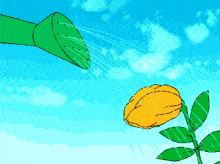
Although a drought-tolerant plant, Anthurium Pedatum enjoys a slightly moist condition to thrive.
However, avoid overwatering your plant to prevent soggy soil, leading to root rot issues.
A water-saturated Anthurium Pedatum will exhibit soggy-looking soil, decayed lower stems, slowed growth, and dropping young leaves.
On the other hand, a severely thirsty plant will show dried, yellowed, and crispy leaves.
Tips to Provide Adequate Watering
- Use a soil moisture sensor to check the moisture level. Anything above 8 indicates an overwatered plant.
- Alternatively, insert your finger to check the moisture level. The top 2″ of soil should feel drier before watering.
- Increase the watering frequency to 3-4 days when the daily temperature rises above 95-degrees Fahrenheit.
- Mist the plant leaves in the morning, especially in summer, to boost humidity.
- Ensure to use rainwater or distilled water, mineral water to prevent chemical stress.
3. Warm Temperature
Anthurium Pedatum prefers a significantly warm and humid environment that mimics the Central American climate.
Place them close to a window or patio that receives a generous amount of indirect sunlight and has a temperature ranging between 70-90°F (21°C to 32°C).
They would naturally thrive in USDA zone 10a to 11 with an average temperature of 50°F and slightly longer daylight hours.

Like other Anthuriums, it can well survive at around 70-degrees Fahrenheit.
However, anything under 60°F may push back the growth and invite cold stress problems, including leaf drops and stunted growth.
Tips to Ensure Ideal Temperature
- South or southwest-facing windows can be ideal for this plant but keep them a few feet away to avoid leaf burns.
- Mist the plant leaves regularly in summer when the temperature rises above 90°F to boost humidity level.
- Move them inside the house when the temperature drops below 60°F in the fall.
- Use a heating pad or insulation to prevent cold stress for a small-sized plant.
- Otherwise, place them under high-wattage HID bulbs and LED grow lights to provide an ideally warm and conducive environment.

4. Moderate Humidity level
An appropriate humidity level is necessary for tropical species like the Anthurium, including Pedatum.
However, it is not very picky about high humid conditions like other Anthurium plants.
Anthurium Pedatum ideally thrives in moderate humidity levels ranging from 40-65%, especially during the growing season.
The relative humidity level would reach as much as 65% in spring and summer, but ensure water and mist the plant regularly.
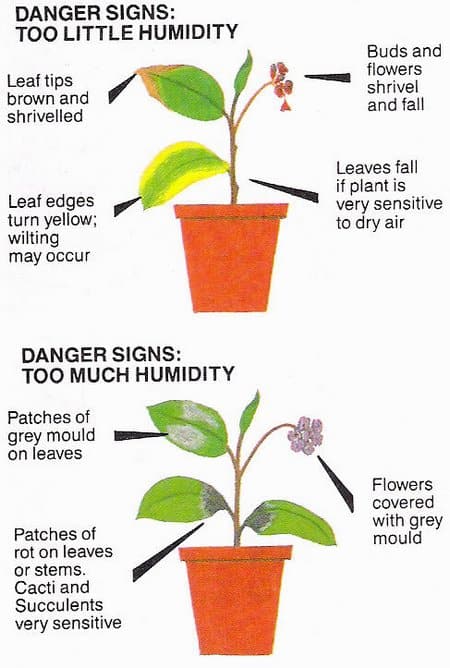
Anything below 40% humidity may dry out the plant, causing transpiration (loss of water through leaves), browning tips, yellowing, and curling.
On the other hand, excess humidity, usually above 75%, can bring moisture stress problems, including soggy soil conditions.
Tips to Provide Optimum Humidity
- Naturally, boost the humidity around the plant by huddling all the houseplants together.
- Otherwise, move the plant close to naturally humid areas like the kitchen or bathroom.
- Alternatively, install an electric humidifier in the room to boost and maintain ideal humidity levels.
- Mist the plant leaves regularly in summer when the temperature rises above 95°F.
- To prevent a plant from drying out, consider placing them on a pebble tray filled with water to allow the soil to soak the moisture naturally.
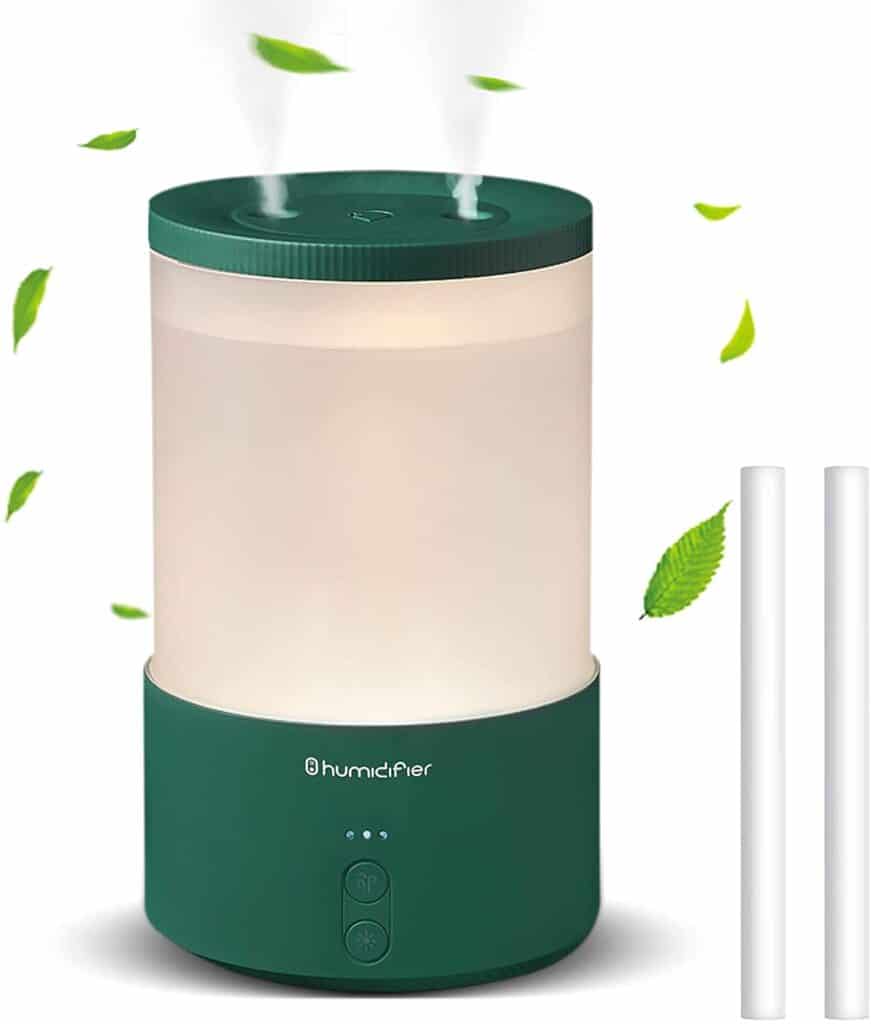
5. Well-Draining Chunky Mix
Anthurium Pedatum grows best in a well-draining, chunky soil mix high in peat contents.
A good amount of peat helps reduce soil compaction while increasing water absorption quality.
Gets a chunkier potting mix containing 60% peat with sand, pine bark, perlite or pumice, and some compost to witness a thriving Anthurium Pedatum.
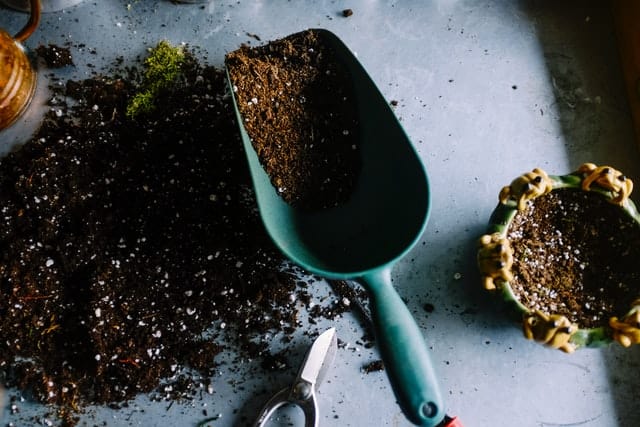
Using the rich, organic potting mix also prevents waterlogging problems, somethingAnthurium Pedatum is susceptible to.
The correct mix also helps produce beneficial microorganisms that keep feeding the plant even in winter. Hence, Anthurium Pedatum keeps blooming round the year.
Alternatively, get a commercial potting mix intended for Anthurium because not everyone can prepare a potting mix at home.
Note: The soil mix rich in peat naturally has an acidic to neutral pH level, ranging from 6-6.5, required by Anthurium.
Here are a few potting mix recommendations for you;
 Espoma OR4 Organic Orchid Mix Potting Soil |  Miracle-Gro Indoor Potting Mix |
 SUNGRO Natural & Organic Potting Mix |  Burpee Organic Premium Potting Mix |
6. Monthly Fertilization
Anthurium Pedatum benefits from occasional plant food. Moreover, you can follow the same fertilization pattern as other Anthurium plants.
Provide your Anthurium Pedatum with well-balanced liquid plant food every month.
Some growers choose to feed mild plant food bi-monthly during the growing season. However, if you are concerned about overfertilization, keep the feeding to once a month.
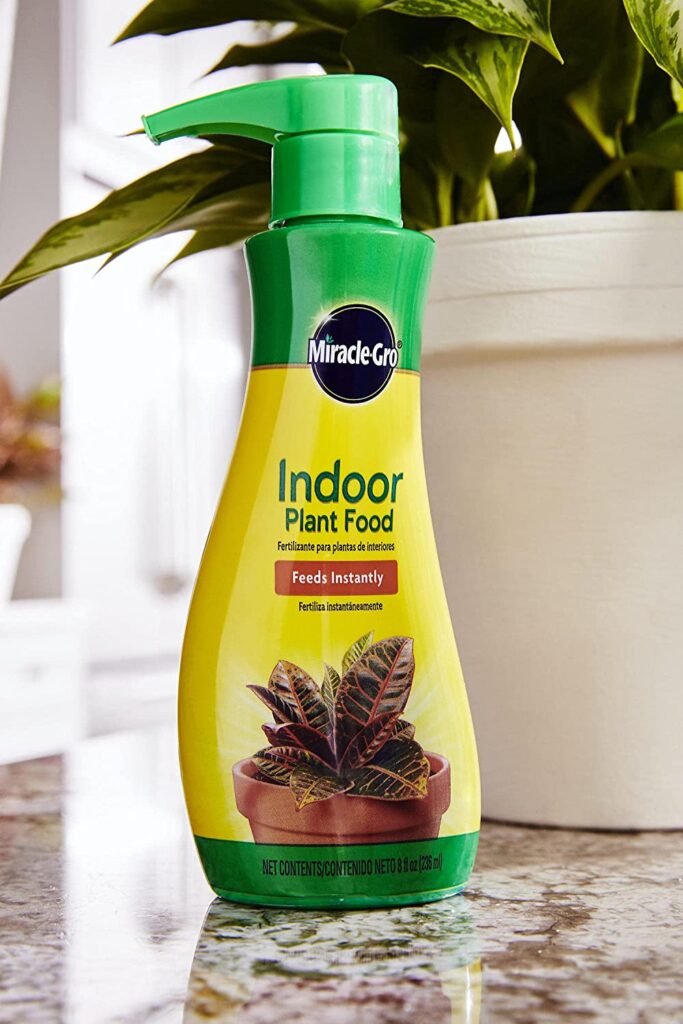
Similarly, cut back on fertilizing in fall and winter when the plant becomes dormant. Feeding during dormancy can choke the plant, trapping the nutrients from reaching the roots.
It may also cause salt buildup in the soil that is often shown by yellowing leaves, dried stems, stunted growth, and drooping leaves.
Tips to Fertilize Anthurium Pedatum
- Use well-balanced liquid fertilizer to promote even, fresh vegetation round the year.
- Dilute the liquid plant food to one-fourth strength by mixing water before applying.
- Alternatively, use 1 gram of Osmcote 14-14-14 or Nutricote 13-13-13 to offset the risk of overfertilization.
- Provide watering with Eleanor’s vf-11 once a month throughout the growing season to boost the flowering period.
- When applying, keep it away from the reach of stems and leaves to prevent burns.
- Anthurium is not a heavy feeder, so make sure to use mild plant food with low NPK (Nitrogen, Phosphorus, and Potassium) contents.
Pro Tip: Using organic compost like worm casting, manure, or bone meal may offset the risk of salt buildup.
7. Growth Habit, Foliage, and Flower
Anthurium Pedatum is a slow grower that would reach about 2-3 feet (0.6-0.9 meters) in its lifetime.
However, the signature leaves would expand to a width of almost 6 feet (0.8 meters).
Anthurium Pedatum is known for its showy leaves that start as heart-shaped leaves when young and gradually grow into a lobe-like appearance.

A healthy plant will always exhibit bright, green foliage that will last throughout winter.
Talking about blossoms, Anthurium Pedatum usually flowers in spring and summer. It grows into a 3-4 inches long spathe greenish in color.
It will gradually turn yellowish as it matures and grows out a purple spadix that will attract a lot of pollinators.
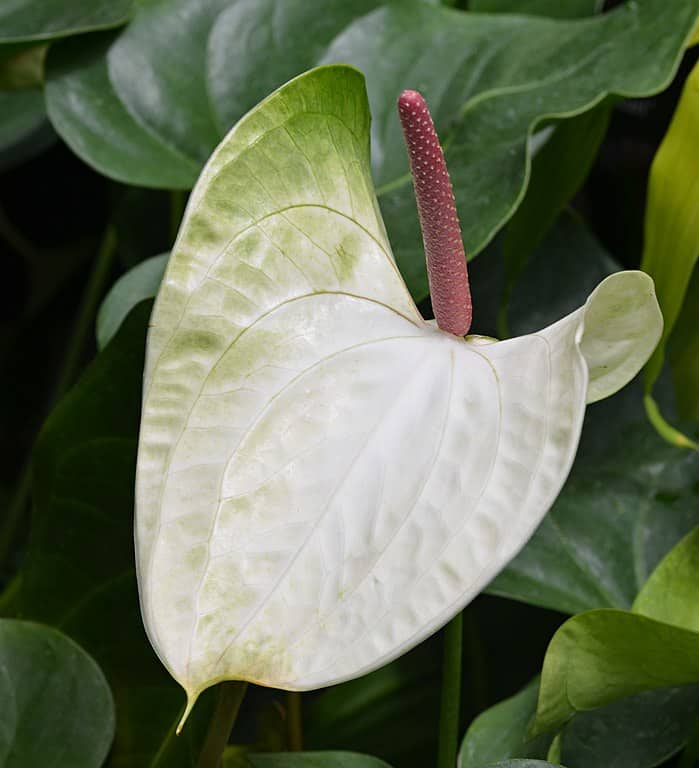
Care to provide complete care, lighting, watering, humidity, and plant food to encourage even growth and blossoms around the year.
Pro Tip: Choose to plant them in USDA hardiness zone 11-13 to witness the best growth.
8. Occasional Pruning
Occasional pruning does wonders to Anthurium Pedatum, keeping it looking healthy and encouraging thick foliage.
Prune your Anthurium Pedatum to remove wilted blossom, aged or decayed leaves, leggy stems, and spent flowers throughout the year.
Removing old, decayed leaves and flowers will encourage the plant to channel the beneficial juices in generating new blooms.
Unlike other houseplants, you can prune Anthurium Pedatum any time of the year.
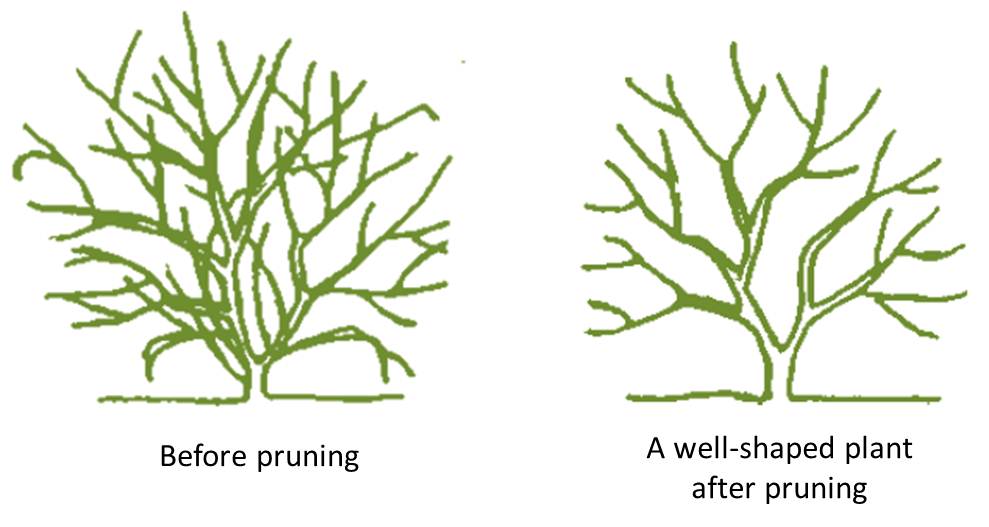
Tips to Pruning Anthurium Pedatum
- Disinfect your pruning shear or scissors before and after use.
- Start with trimming yellowing, browning leaves, the move to decayed and aged leaves.
- Snip off the stem of fading blooms at the plant’s base.
- Next, snip off outer leaves that may appear different from the plant’s natural appearance.
- Just be careful not to remove all of the plant’s leaves; at least four should remain.
9. Potting and Repotting
You should not worry about frequently repotting Anthurium Pedatum because it is a slow grower that will hardly grow a few inches each year.
Wait until your Anthurium Pedatum begins showing root-bound signals such as the roots poking out of the holes, slowed plant growth, and wilted young leaves.
Unlike other Anthurium, Pedatum slightly enjoys a root bound condition; hence, it is best to wait until it shows healthy growth.
It would not appreciate being moved to a bigger pot too quickly.
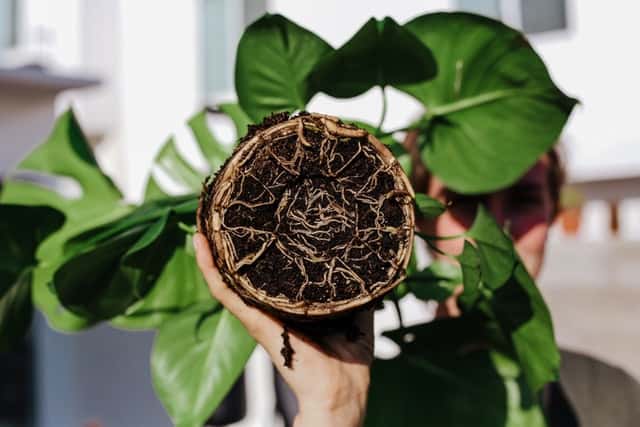
Tips to Repot Anthurium Pedatum
- Wait at least 2-3 years between repotting the plant in an enormous container.
- Choose a pot 2″ bigger in diameter than the previous one.
- Any container type will suffice until it has a couple of drainage holes.
- Water the soil previously before sliding it out.
- Clear the roots with clean water to check for root rot signs and trim off browning or mushy roots using a sharp pruning shear.
- Prepare a potting mix in a new container and insert the plant with roots down.
- Place it at the same depth as the previous container, but ensure to keep at least 2″ of free space between the root and the container’s bottom.
- Fill the pot with the potting mix and run it with water thoroughly to keep it moist.
Toxicity of Anthurium Pedatum
Anthurium Pedatum is not much different from other tropical plant species regarding toxicity.
You heard it right! Anthurium Pedatum is a known toxic plant containing active calcium oxalate crystals.
The calcium oxalate oozing out from saps and wounds from stem and leaves are harmful to humans and pets.
It may irritate when ingested or brought in contact with the eyes, nose, skin, and mouth.
It mainly troubles the oropharynx of dogs and cats, creating oral irritation, drooling, and vomiting. While in humans, it may cause swollen lips and tongue or breathing problems.
The University of California attests that the Anthurium plant comes in third and fourth-class toxicity.
Contact the American Association of Poison Control Center at (800) 222-1222 or ASPCA Poison Center at (800) 426-4435 for pets immediately.
Propagating Anthurium Pedatum
Propagating Anthurium Pedatum is pretty simple and involves only a few quick steps. It is similar to propagating Anthurium Fingers that include taking a healthy offshoot.
You can cut offshoots at two times; early spring or late winter when the plant gradually starts escaping dormancy.
However, be careful about damaging the root bulb because you still need to grow the mother plant.
Step 1: Choosing the Offshoots
- Moisten the potting mix a day before taking the cutting.
- Gently shake the pot or tug the entire plant out along with the potting mix.
- Remove the soil attached to the root bulb with your fingers.
- Then inspect for visible signs of root rot (dark, brown, or mushy parts).
- Prune the infected parts using a disinfected pruning shear.
Step 2: Cutting the Offshoots
- Choose the best-looking offshoot with visible half or one-inch rootlets outside the crown area (central bulb).
- Separate the outermost offset from the mother plant, but ensure the rootlet has a stem attached.

Step 3: Preparing the Cutting
- Apply the fungal powder and growth hormones paste to the cut ends using a spoon or knife.
- It will help boost the rooting process and ward off fungus infections.
Step 4: Planting the Cuttings
- Next, transplant the cutting into a new pot with an appropriate potting mix.
- Place the cutting in the middle and ensure to leave at least 2″ of free space between the root and pot’s bottom.
- Follow the same process for the mother plant.
- Fill the rest of the pot with potting mix and moisten it thoroughly until the water drains out of the bottom.
- Finally, place them in a warm location with adequate indirect sunlight and moisten the mix regularly.
Voila! The offshoot will start producing leaves within 3-4 weeks in the shape of tiny hearts.
Continue the regular care and maintenance to witness a mature plant in the next growing season.
Related Article: Anthurium Papillilamum: Ultimate Care Guide
Common Problems with Anthurium Pedatum
Anthurium Pedatum as a houseplant is prone to many different pests’ problems and horticultural diseases.
While some are innate to their natural settings, others are acquired from the house or garden plants.
Always keep an eye out for a different set of problems to administer timely treatment.
1. Yellowing Leaves
The Yellowing of Anthurium Pedatum leaves indicates more than one problem with the plant.
Anything from overwatering, bright direct sunlight, overfertilization, and lack of humidity may cause premature yellowing of leaves.
Start with assessing the soil to conclude whether it is too wet, which indicates an overwatering problem.

A dry, compact soil with slowed plant growth indicates overfertilization, while crispy leaves with some yellowing indicate light-saturation and humidity problems.
Refer to the plant care section given above to find the correct treatment and preventive measures to control yellowing.
2. Drooping and Browning Leaves
Drooping leaves with some browning indicates waterlogged soil or root rot problems.
Waterlogged soil encourages fungus and anaerobic microorganisms to multiply and attack the roots, depriving them of air, nutrients, and beneficial organisms.
Check whether the soil feels too moist, and the lower stems exhibit signs of decaying to assess the severity of the damage.
Even better, slide out the plant to check for visible signs of root rot, dark, mushy, and smelly roots.
The plant with severe root rot should be disposed of immediately.
For waterlogged soil in a preliminary stage, consider placing them in a warm, brightly lit location and cut back on watering until the plant revives.
3. Leaf Burn
Leaf burns in the Anthurium Pedatum plant indicate direct sunlight, dwindling humidity, or overfertilization.
Any of these conditions will deprive the plant roots of effectively absorbing water, nutrients, and microorganisms.
Similarly, the plant leaves will begin transpiring due to lack of humidity and moisture, leaving burn marks on the leaf.
Cut back on fertilizing until your run off the soil with excess salt.
Move the plant indoors to a location with diffused light and continue regularly watering and misting to boost humidity.
4. Common Houseplant Pests
Anthurium Pedatum is prone to a few common houseplant pests that may spread from infected plants and garden plants.
Some common pests that infest Anthurium include Mealybugs, Thrips, and Aphids.
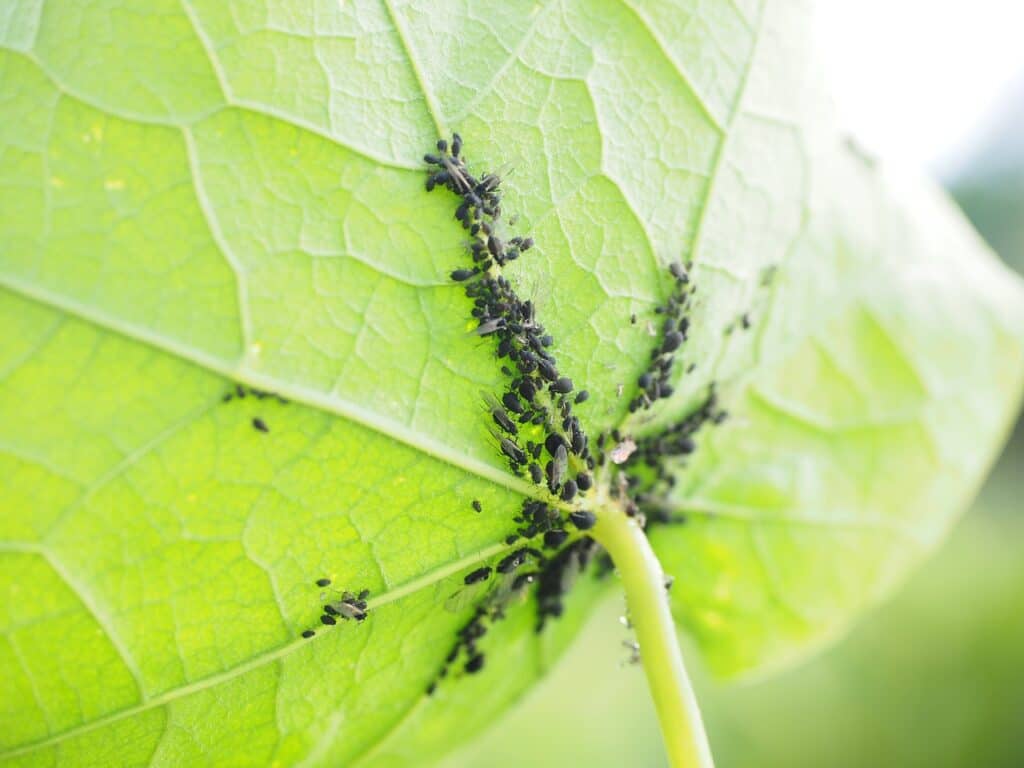
Here is a brief guide about the pest and their problems.
| Pest | Symptoms |
|---|---|
| Mealybugs | Waxy bugs that have cotton-like substances wrapped around them on the undersides of the leaves. Curling, wilting, and drooping of foliage. |
| Aphids | Tiny grey or black-colored insect cover the leaf. |
| Thrips | Silvery grey marking on the leaves, including streaks, silvery speckling, and small white patches. |
Appropriate Treatment
- Spread yellow sticky traps in the vicinity of your plant to attract and capture thrips
- Wash the plant with a cotton ball soaked in 98% Isopropyl alcohol to kill the pests effectively.
- Otherwise, wash the Pedatum with a mixture of warm soapy water or insecticidal soaps.
- Soak a cotton ball with Neem oil and apply it all over the plant.
- Using Pyrethrin insecticidal spray will effectively kill harmful pests, but ensure to follow the manufacturer’s guide before applying to prevent significant damages.
Preventive Measures
- Inspect the new plant for signs of a pest infestation before purchasing.
- Avoid bringing cuttings, twigs, and grasses from the garden inside the house.
- A commercial certified Aphid-free potting mix will prevent aphid infestation.
Read more: How to Identify Insect Eggs on Leaves and Treat Pest Infestation?
5. Common Horticultural Diseases
Anthurium Pedatum, like any other tropical plant, is prone to fungal and bacterial damages, primarily due to wrong growing conditions.
Excess moisture and humidity caused by overwatering may invite common horticultural diseases like bacterial blight, bacterial wilt, and Rhizoctonia spp.
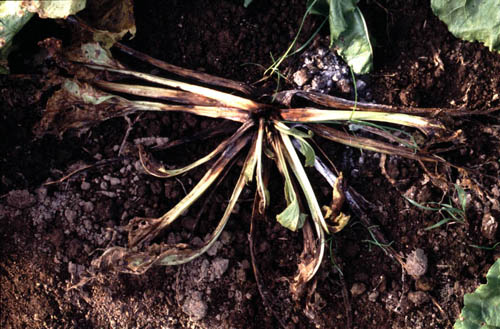
Here is a brief guide about the diseases and problems posed by them.
| Disease | Symptoms |
|---|---|
| Root Rot Disease | Mushy, dark-brown spots on leaves. Roots become brown, mushy and disintegrated |
| Fusarium wilt | Yellowing of leaves along with appearance of brown, bronze color. Infection causes bacterial ooze (brown slime) |
| Bacterial Blight | Yellowed, water-soaked lesions along the leaf margins, causing puncture. Invading bacteria quickly spread throughout the plant |
Appropriate Treatment
- Immediately dispose of the plants with severe infestation root rot.
- Apply Medallion 50W to treat Rhizoctonia spp effectively.
- Use fungicides containing copper, Benomyl, or Mancozeb to treat fungal and bacterial infections.
- Alternatively, use a phosphorous acid-based fungicide to remove bacterial wilt.
- Applying Agromycin on the soil will help treat bacterial blights.
Preventive Measures
- Always buy a plant from a certified seller or retailer
- Strictly follow the watering schedule to maintain correct humidity and moisture level.
- Install an electric humidifier to control indoor humidity level as per the need.
- Ensure the plant pot has enough drainage holes to let out excess water.
FAQ About Anthurium Pedatum
Where to Buy Anthurium Pedatum?
Anthurium Pedatum is easily found in many local nurseries, online resellers, and wholesalers.
Here is a list of a few websites.
| Place to Buy | Specification |
|---|---|
| Ecuagenera | It starts from $35, with easy shipping options. |
| Etsy | Find an assorted list of Pedatum starting from $40. |
| Paraiso Plant | It starts from $200, is located in California, and has easy shipping options. |
Are you searching for the rare Anthurium Wendlingeri? Read our article to find out its care requirements along with buying guide.
Should you Mist Anthurium Pedatum?
Anthurium Pedatum enjoys a light misting during the growing season, especially when the temperature soars high.
To increase the effect, mist the plant early morning to create dews.
However, increased water droplets may create excess moisture that could be fatal to the plant.
Can you Use the Coffee Ground as Compost?
Using the coffee ground as compost on Anthurium Pedatum is a bad idea. It creates an acidity imbalance in the soil that will harm the plant’s growth.
Although it may work for many houseplants, Anthurium does not appreciate its use.
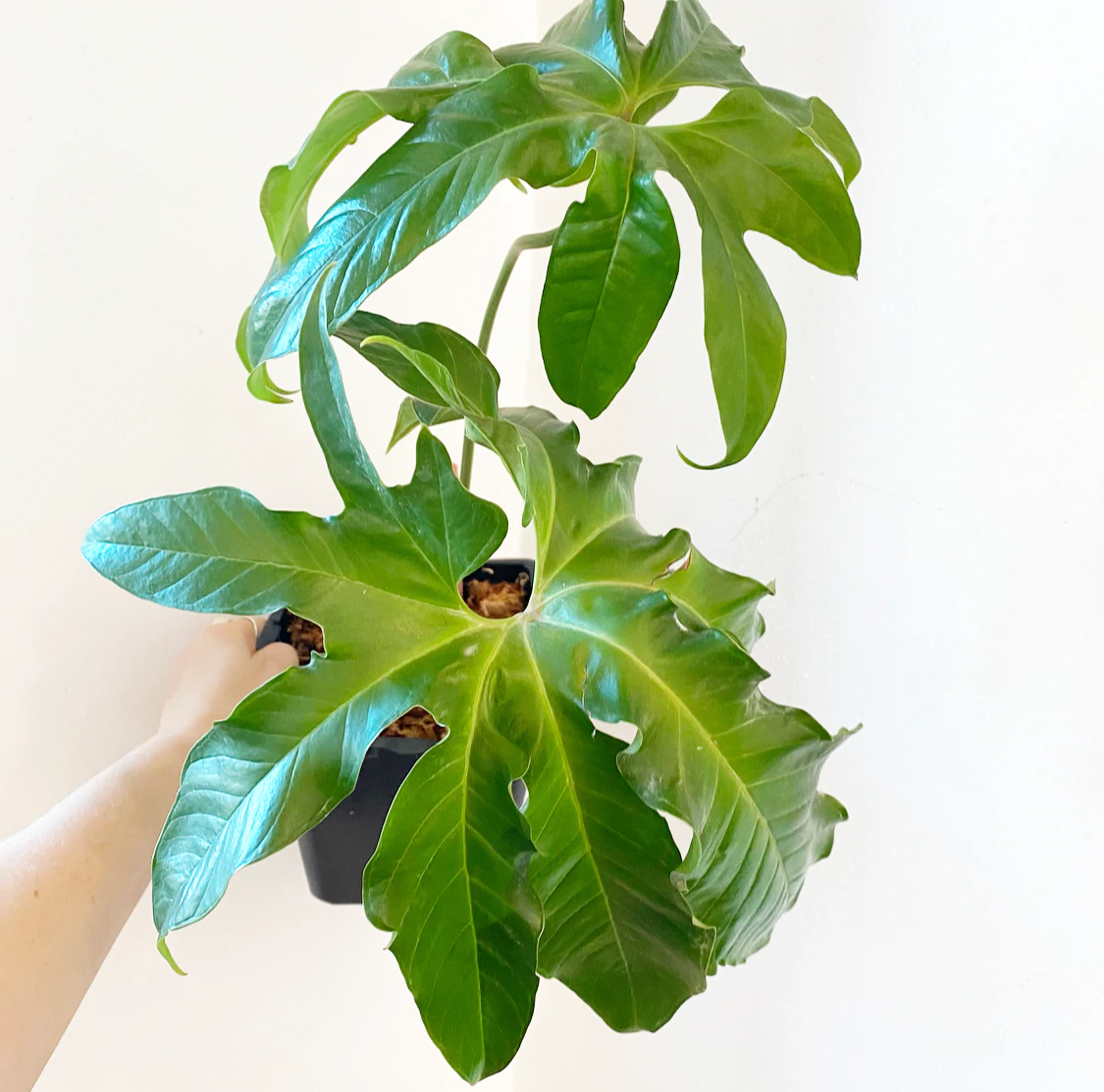
The Editor Has a Say!
Anthurium Pedatum is a prized possession because the mature plant with lobe-like leaves will liven up the indoor decor.
A low-maintenance and drought-tolerant plant will do well even with minimal upkeep, offering more free time in hand.
The plant will bloom around the year when the growing condition is always optimal.


